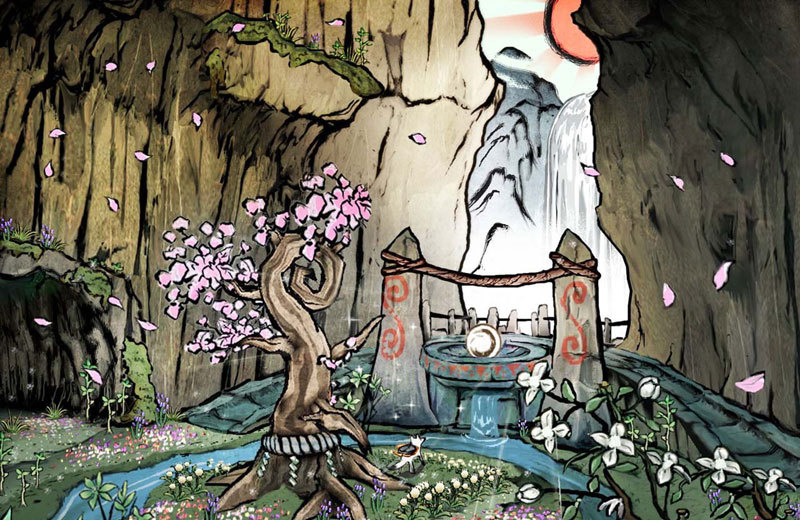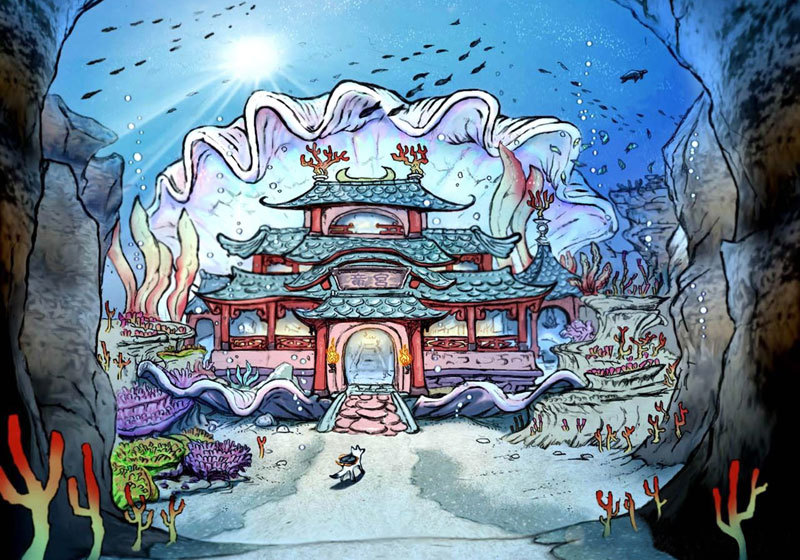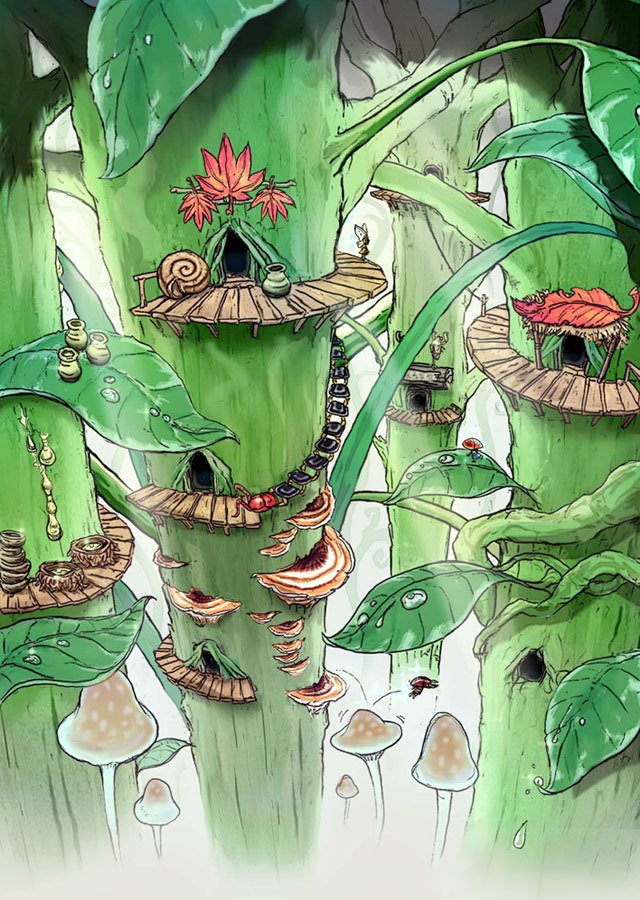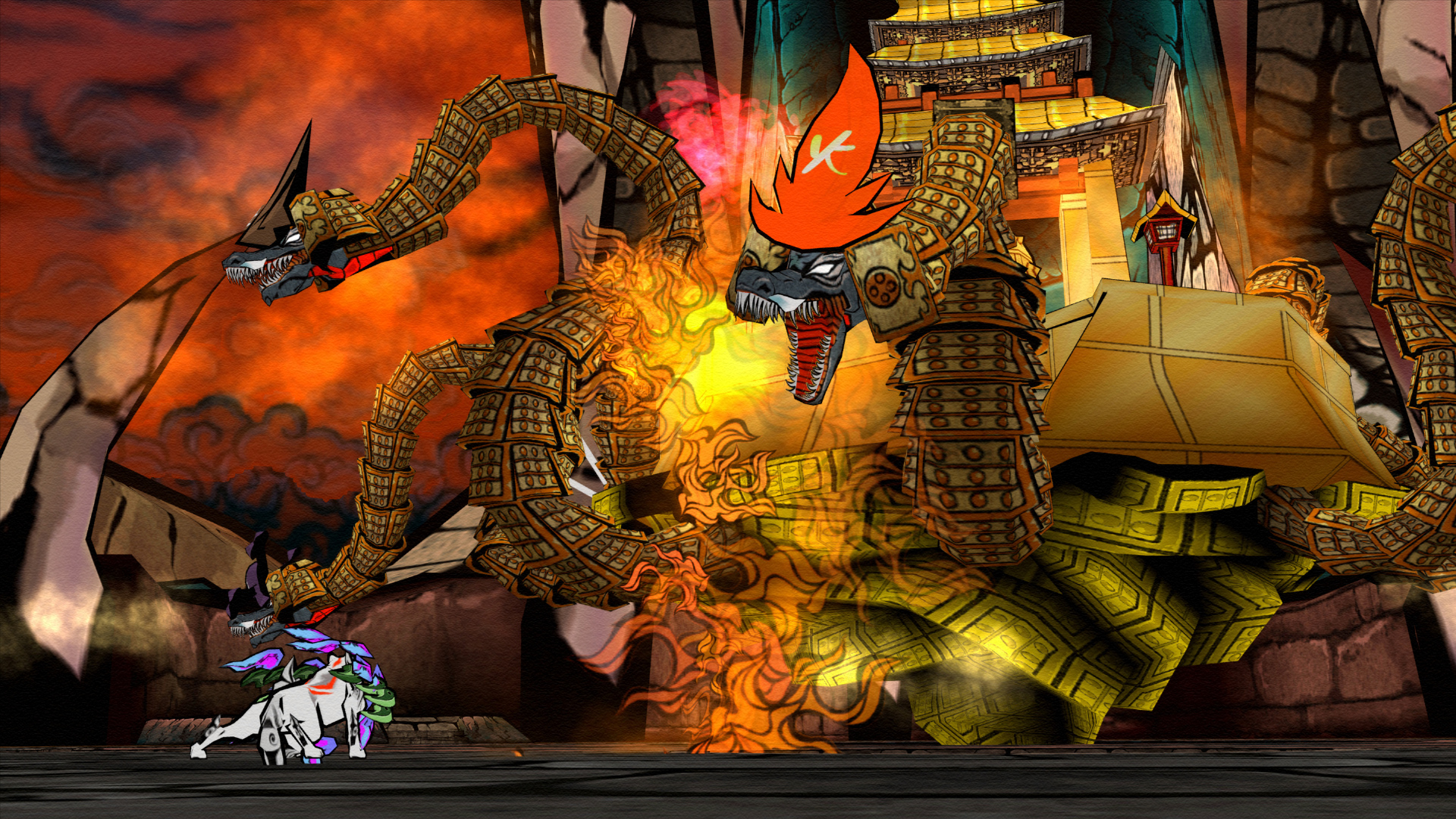As I was intent on using a more water-color inspired sort of art style for my animation, I found myself immediately going back to this game when looking up for references that uses such an art style, this game remains one of my biggest inspirations to this day for its unique, clever and downright gorgeous style.
Okami is a critically acclaimed action adventure video game developed by Clover Studio (That sadly closed in 2007) and published by Capcom, that was released for the Playstation 2 in 2006 in Japan and North America and 2007 in Europe and Australia. A Nintendo Wii version was developed and produced by Ready at Dawn a few months after its initial release. A HD port of the game was released for the PS3 and PSN in October 2012 and for retail in Japan in November 2012, supporting the use of the Playstation Move motion controller (Which I still can't figure out at times…), a sequel for the Nintendo DS titled Okamiden (AKA, The Chubby Puppy Edition) was also released in Japan in September 2012 and in North America and Europe in March 2011.
Set sometime in feudal Japan, the game combines several different japanese myths, legends and folklores to tell a seemingly simple (At first glance) tale of how the land was saved from darkness by the Shinto sun goddess named Amaterasu (The playable protagonist), who took the form of a white wolf.

Humorously Clover Studio didn't exactly have a solid idea on what it was that they wanted to do when this game was still in process. Originally it was meant to focus mainly around nature (Yeah, it's pretty vague…) but had no central concept or theme. Lead designer Kamiya later on created a minute long demonstration movie (With a far more realistic style as compared to that of the finished product) showing a wolf running about a forest, with flowers blossoming in its wake, but it still lacked any actual gameplay. Many ideas were thrown together before they settled for the final product we see today.
 |
| Original realistic style on the left and the final sumi-e style on the right. |
What is obviously one of the game's most outstanding aspects is its art (That also connects closely with its gameplay) which is highly inspired by Japanese water color and wood carving art of the Ukiyo-e style. While Okami was originally planned to be rendered in a far more photorealistic 3D style, the studio figured that the more unique look of sumi-e was able to better present the main character Amaterasu's association with nature and the task of restoring it (That and due to the fact that there are some limitations to what the PS2 can actually handle when it comes to its graphics).
Okami has been a huge influence to many other game titles over the years, such as Ico and Shadow of the Colossus in terms of gameplay and artwork. Capcom's Street Fighter IV also stated that the style of artwork done for their characters are influenced by the game. Epic Mickey also uses drawing mechanics similar to Okami.
 |
| Note the brush-stroke like effects used for the characters, these are also seen in-game, particularly when more dramatic or powerful movements are performed by the characters. |
Anyway, upon switching to this style (Honestly this change in style really turned out to be a major blessing in disguise...), it was then the Celestial Brush was developed.
The Celestial Brush is a unique feature to the game, where players can for a brief moment pause the game and bring up a canvas of sorts over any scene they are currently in, where they will be allowed to draw onto the screen… obviously this works better with the Wii remote or Playstation Move controller (But I'm sure most of us got the hang of using a PS2 controller). While it can be used in combat, it is used more so for puzzles throughout the game, for instance, to revive the sun, a circle must be drawn up in the skies where the sun should be located (And this is one of the simplest tasks given, there's going to be tougher shapes to draw than circles later on…).
Obviously had they stuck to the photo realistic style, this feature probably would not have come about in the first place, and if it did, it just wouldn't blend in as well with such a style.

At first glance, you might think that such an art style would be much simpler to handle as compared to a more realistic one… well you're dead wrong. The details in this game are absolutely immense and clearly much love was put into it all, characters might seem simplified and cartoony, but take a closer look and you will realize how incredibly detailed they actually are (It is also clear how their sumi-e-ish outlines are handled with the most utmost care, with thick and thin lines carefully balanced out). And the settings…
 |
| ... oh... |
 |
| … man... |
 |
| … these... |
 |
| … settings... |
 |
| … UNGFH! |
Trust me, the in-game stages aren't all that different to these concept works (And you should see the uncolored pieces too, they are just as lovely to look at).
Needless to say, the style is a lot more challenging to duplicate than one might think, it might help however if they had some experience when it comes to using watercolors and inks traditionally, some unique brushes might also need to be made (Or at least obtained) when this style is to be recreated digitally. I myself am still facing troubles in creating a style halfway close to the game's own beautiful style, though I suppose that's a good thing… I want the game to simply remain as an inspiration to me (I even own the art book, it is one of my most prized possessions, unfortunately the spine is wearing out considerably since I looked into it so many times…), not something to completely rip off from.
There is so much I can say about the game, it is obviously better to play it for yourself if you haven't… but this isn't actually a game review so I suppose I don't have any say in that (Play it). I want to again bring up the fact that this game has a gorgeously unique art style and has made me develop a huger appreciation for traditional painting techniques, deciding which lines should be thickened or thinned out still proves to be a huge challenge to me when done digitally and is sadly very time consuming, and so this will have to be used as a lighter form of reference for my Applied Animation project, I still believe however that it remains a valuable source of referencing for it and future works...
 |
| Until next time! |





Insightful post about Frame By Frame Animation
ReplyDelete! At TVS Cube, we excel in frame-by-frame animation, bringing characters to life with smooth motion and expressive storytelling.